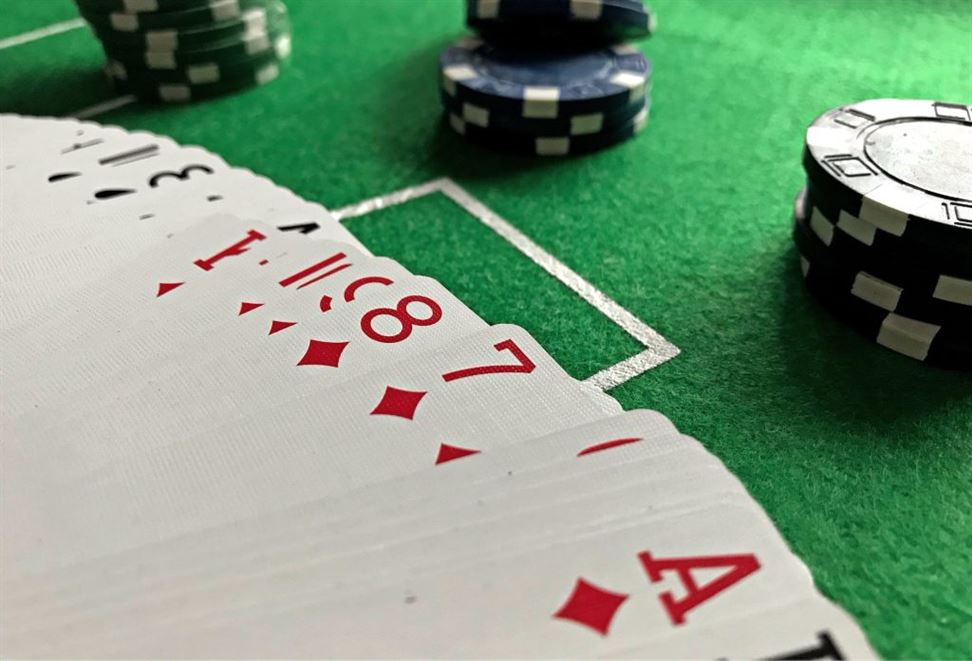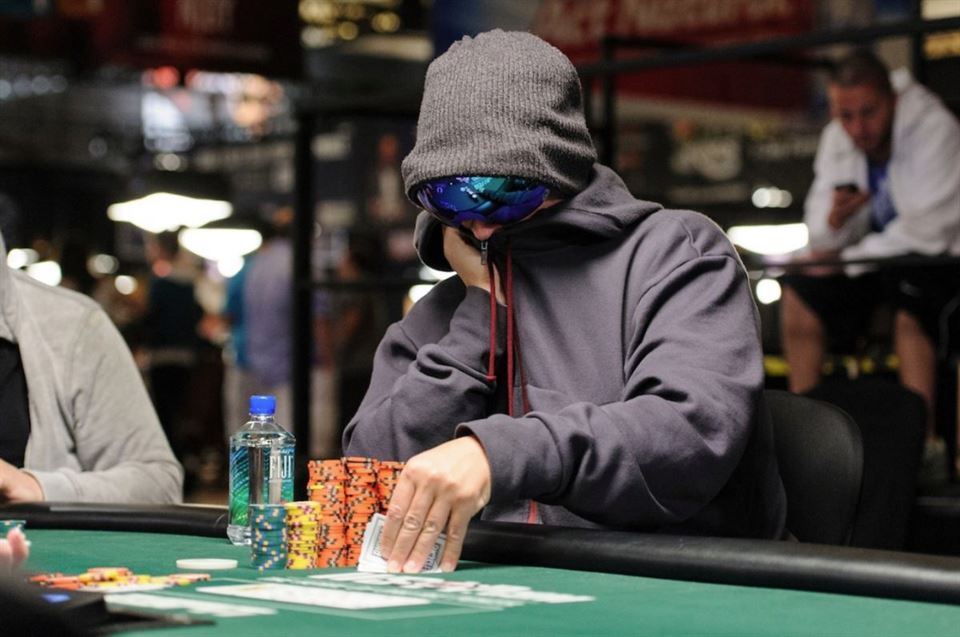Multi-table tournaments (MTTs) are a popular format in the world of poker, offering players the opportunity to compete against a large field and potentially win significant prizes. However, navigating through a large number of players and tables can be challenging. To increase your chances of going deep and winning big in MTTs, it is crucial to employ effective strategies. In this article, we will explore some key strategies that can help you succeed in MTTs and maximize your chances of achieving a deep run and a substantial payout.
Effective Bankroll Management Strategies for Multi-Table Poker Tournaments
First and foremost, it is essential to set a budget for yourself before entering any tournament. This budget should be an amount that you are comfortable losing, as there is always a risk involved in poker. By setting a budget, you can ensure that you are not risking more than you can afford to lose, and you can play with a clear mind, free from the stress of financial strain.
Once you have set your budget, it is important to stick to it. This means resisting the temptation to chase losses or increase your bets in an attempt to recoup previous losses. It is crucial to remember that poker is a game of skill and luck, and no amount of betting can guarantee a win. By sticking to your budget, you can avoid making impulsive decisions that could lead to financial ruin.
Another key aspect of bankroll management in multi-table tournaments is understanding the concept of variance. Variance refers to the natural ups and downs that occur in poker, where even the best players can experience losing streaks. It is important to have a bankroll that can withstand these fluctuations without depleting your funds entirely. A general rule of thumb is to have at least 50 buy-ins for the level at which you are playing. This ensures that you have enough funds to weather the storm of variance and continue playing without going broke.
In addition to having a sufficient bankroll, it is also important to adjust your bet sizes based on the stage of the tournament. In the early stages, when the blinds are low and the stacks are deep, it is advisable to play more conservatively and avoid taking unnecessary risks. As the tournament progresses and the blinds increase, it becomes necessary to take more aggressive actions in order to accumulate chips and stay ahead of the rising blinds. By adjusting your bet sizes accordingly, you can maximize your chances of success at each stage of the tournament.
Furthermore, it is crucial to keep track of your results and analyze your performance. By reviewing your hand histories and identifying any leaks or areas for improvement, you can refine your strategy and become a more successful player. This self-reflection is an ongoing process that should be done regularly, allowing you to continually evolve and adapt your game to the ever-changing landscape of multi-table tournaments.
Mastering the Art of Table Selection in Multi-Table Poker Tournaments
When it comes to table selection, there are several factors to consider. First and foremost, you want to find a table with players who are less skilled than you. This may seem obvious, but it is a crucial aspect of maximizing your chances of success. Playing against weaker opponents gives you a significant edge and increases the likelihood of making it to the later stages of the tournament.
To identify weaker players, pay attention to their betting patterns and overall gameplay. Look for players who make frequent mistakes, such as calling too often or playing too many hands. These players are more likely to give away their chips and provide you with opportunities to accumulate a larger stack.
Another important factor to consider when selecting a table is the average stack size. Ideally, you want to find a table where the average stack is smaller than yours. This gives you more leverage and allows you to apply pressure on your opponents. When you have a larger stack, you can afford to be more aggressive and take calculated risks, putting your opponents in difficult situations.
Additionally, it is beneficial to choose a table with a mix of tight and loose players. Tight players tend to play fewer hands and are more cautious with their chips, while loose players are more willing to take risks. Having a mix of both types of players at your table creates a dynamic environment where you can exploit the weaknesses of each player. Tight players can be bluffed more easily, while loose players can be taken advantage of when they overplay their hands.
Furthermore, consider the position of the players at the table. Ideally, you want to be seated to the left of aggressive players and to the right of passive players. This allows you to have positional advantage over your opponents and control the flow of the game. When you are in a late position, you have more information about your opponents’ actions and can make more informed decisions.
Lastly, keep an eye out for tables with a friendly atmosphere. While this may not directly impact your gameplay, it can contribute to a more enjoyable experience. A friendly table can help you stay focused and relaxed, which is crucial for making optimal decisions. Avoid tables with toxic or hostile players, as they can negatively affect your mindset and overall performance.
Advanced Pre-flop Strategies for Multi-Table Poker Tournaments
Pre-flop is the stage of the hand where players make their initial decisions before any community cards are dealt. It is a crucial moment that can set the tone for the rest of the hand and ultimately determine a player’s success in the tournament. In MTTs, where the blinds increase and the pressure mounts as the tournament progresses, having a solid pre-flop strategy is essential.
One important concept to understand in MTT pre-flop strategy is the idea of chip preservation. Unlike cash games, where players can simply buy more chips if they run out, in MTTs, once your chips are gone, you’re out of the tournament. Therefore, it is crucial to avoid unnecessary confrontations and preserve your stack whenever possible.
One way to achieve this is by playing a tight and selective range of hands pre-flop. Instead of playing every hand dealt to you, focus on playing premium hands that have a high chance of winning. This includes hands like pocket pairs, suited connectors, and high-ranking suited cards. By playing fewer hands, you reduce the risk of getting involved in marginal situations and increase your chances of winning when you do enter a pot.
Another important aspect of pre-flop strategy in MTTs is adjusting your play based on your position at the table. In early position, when you are one of the first to act, it is generally advisable to play even tighter and only enter pots with the strongest hands. This is because there are still many players left to act behind you, and you risk getting raised or re-raised by a stronger hand.
In contrast, when you are in late position, or close to the dealer button, you have the advantage of acting last in the pre-flop betting round. This allows you to see how other players have acted before making your decision. In late position, you can afford to play a wider range of hands, including suited connectors and weaker suited cards, as you have more information to make an informed decision.
Furthermore, it is important to consider the stack sizes of your opponents when making pre-flop decisions. If you are facing a raise from a player with a short stack, it may be worth considering their range of hands and the potential for them to go all-in. In this situation, you may want to tighten up your range and only call or raise with premium hands that have a high chance of winning.
On the other hand, if you are facing a raise from a player with a large stack, you need to be more cautious. A large stack indicates that the player is likely skilled and experienced, and they may be trying to put pressure on you. In this case, it may be wise to fold weaker hands and only continue with strong hands that can withstand the pressure.
Exploiting Bubble Dynamics in Multi-Table Poker Tournaments
The bubble phase is a critical juncture in any tournament, as it determines who will cash and who will leave empty-handed. During this phase, players who are close to the money tend to tighten up their play, fearing elimination. This creates an opportunity for skilled players to exploit their opponents’ cautiousness and accumulate chips.
One effective strategy during the bubble phase is to increase your aggression. By applying pressure on your opponents, you can force them to make difficult decisions with marginal hands. This is particularly effective against players with smaller stacks who are desperately trying to survive. By raising and re-raising frequently, you can put them in a tough spot and potentially force them to fold, allowing you to accumulate chips without showdowns.
Another strategy to exploit bubble dynamics is to target players who are playing too passively. These players are often afraid of busting out before the money and will be more inclined to fold rather than engage in confrontations. By identifying these players, you can steal their blinds and antes more frequently, gradually chipping away at their stack. This strategy not only helps you accumulate chips but also puts additional pressure on the passive players, potentially causing them to make mistakes.
It is also crucial to be aware of your own stack size during the bubble phase. If you have a large stack, you can afford to take more risks and put pressure on your opponents. By leveraging your stack size, you can force smaller stacks to fold and increase your chip lead. However, if you have a smaller stack, it is essential to be more cautious and selective with your hands. Look for opportunities to double up and avoid unnecessary confrontations that could lead to your elimination.
Furthermore, paying attention to your opponents’ stack sizes is vital during the bubble phase. Players with medium stacks are often the most vulnerable, as they are torn between survival and accumulating chips. By targeting these players, you can exploit their indecisiveness and put them in difficult situations. This can lead to them making mistakes and potentially busting out before the money.
Lastly, it is crucial to adjust your strategy as the bubble phase progresses. As the money bubble approaches, players become even more cautious, knowing that a cash is within reach. At this stage, it may be beneficial to tighten up your play and avoid unnecessary risks. By doing so, you increase your chances of making it into the money and securing a cash prize.
Adapting Your Playstyle for Different Stages of Multi-Table Poker Tournaments
The early stages of a multi-table tournament are characterized by deep stacks and a relatively slow pace. During this phase, it is crucial to play tight and selectively. The goal is to preserve your chips and avoid unnecessary confrontations. Focus on playing premium hands and avoid speculative hands that can easily get you into trouble. By playing tight, you can build a solid foundation for the later stages of the tournament.
As the tournament progresses and the blinds increase, the middle stages come into play. This is when the dynamics of the game start to change, and players become more aggressive. It is essential to adjust your playstyle accordingly. Look for opportunities to steal blinds and antes when in late position, as this can help you accumulate chips without having to show down your hand. However, be cautious when facing resistance, as players are more likely to defend their blinds at this stage.
One crucial aspect of adapting your playstyle in the middle stages is to be aware of your stack size relative to the blinds. If your stack becomes short, you may need to take more risks and look for opportunities to double up. This might involve shoving all-in with a wider range of hands or making aggressive moves to put pressure on your opponents. However, be mindful of the players at your table and their tendencies. Some players may be more likely to call your all-in bets, so choose your spots wisely.
As the tournament reaches the late stages, the blinds become significant, and the pressure to accumulate chips intensifies. This is when you need to be more aggressive and take calculated risks. Look for spots where you can apply pressure on your opponents, especially those with smaller stacks. By putting them to the test, you can force them to make difficult decisions and potentially win pots without having to show your cards.
In the late stages, pay close attention to the table dynamics and the players around you. Identify the tight players who are trying to hold on to their chips and the aggressive players who are looking to accumulate more. Adjust your playstyle accordingly. Against tight players, you can be more aggressive and steal their blinds and antes. Against aggressive players, you may need to tighten up and wait for premium hands to trap them.
Another crucial aspect of adapting your playstyle in the late stages is to be aware of your position at the table. In late position, you have a significant advantage as you can see how your opponents act before making your decision. Use this to your advantage and look for opportunities to make moves and accumulate chips.
In conclusion, adapting your play style for different stages of multi-table poker tournaments is essential for success. Play tight and selectively in the early stages, adjust your aggression in the middle stages, and be more aggressive and take calculated risks in the late stages. By understanding the dynamics of the game and the tendencies of your opponents, you can increase your chances of going deep and winning big in multi-table tournaments.




